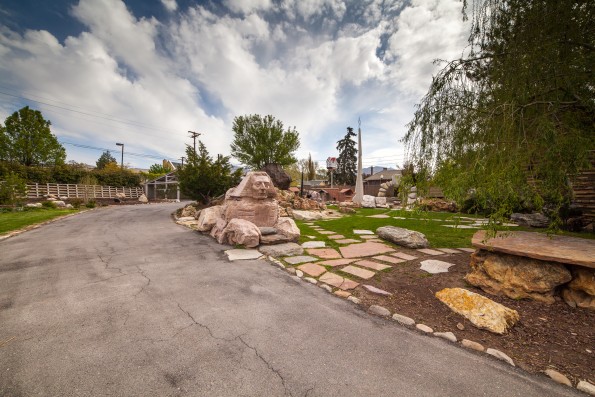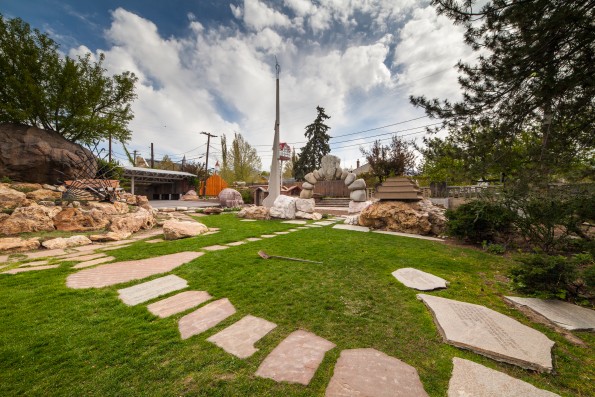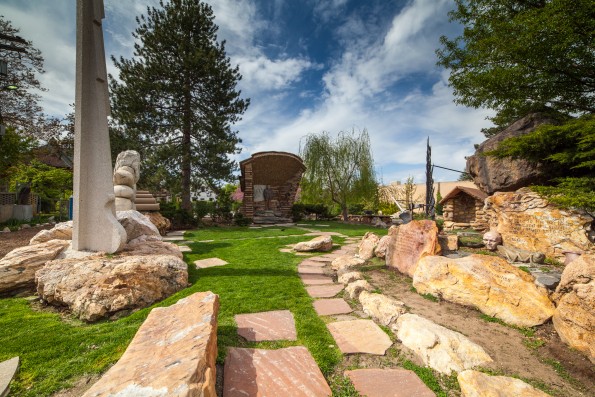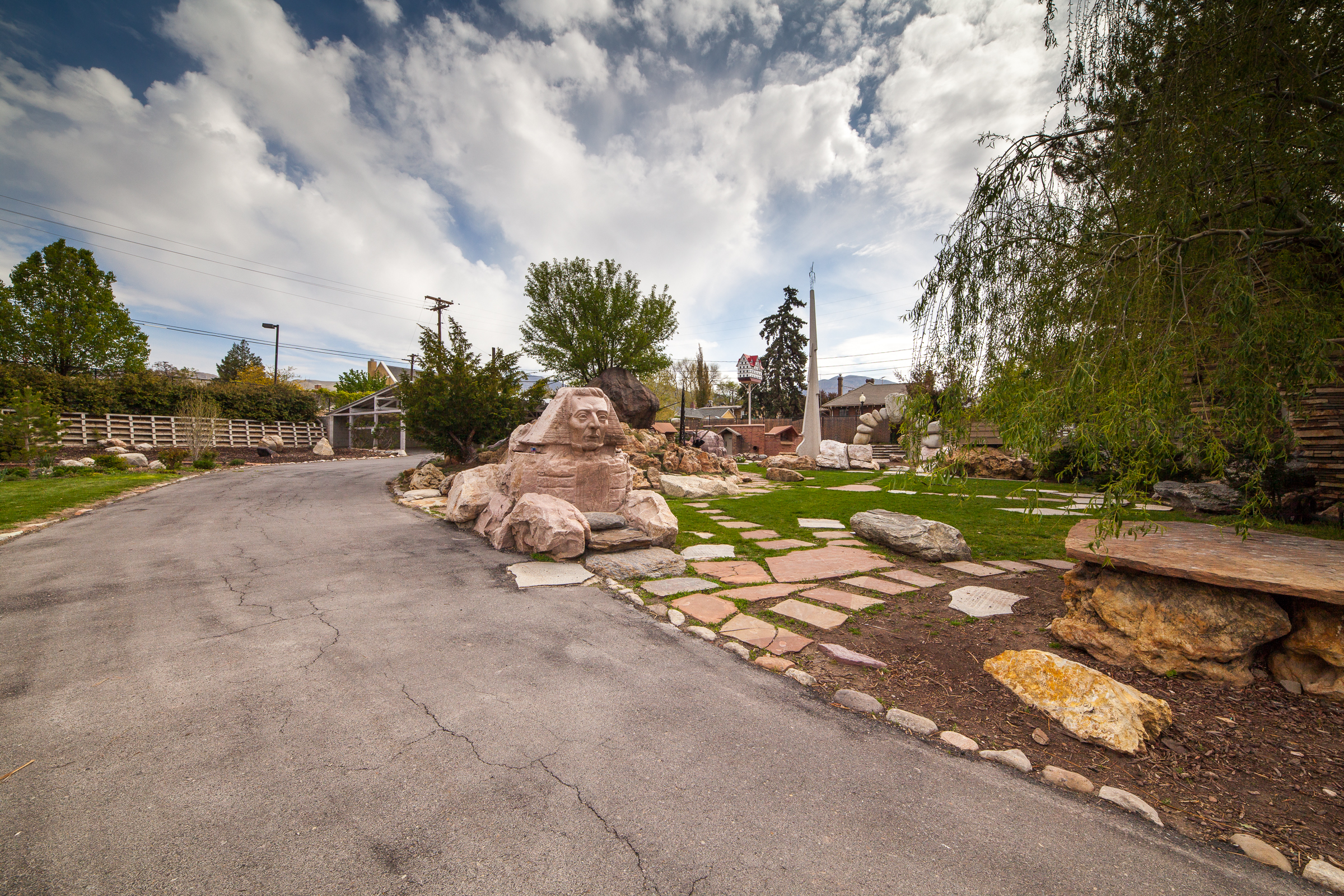
A bust of Joseph Smith appearing as the Sphinx. Biblical and inspirational quotes etched into stones. A life-size self-portrait sculpter with brick pants.
Welcome to Gilgal Sculpture Garden, a three-acre park in the heart of Salt Lake City. Located at 749 East 500 South on a quiet residential street, Gilgal gives visitors an experience altogether different from that offered by a typical public park or community garden.
Thomas Battersby Child, Jr. was 57 years old in 1945 when he began creating the garden in his own backyard. For the remaining 19 years of his life, Child, who lacked formal artistic training, constructed Gilgal exclusively from native Utah stones, which he continually scoured the state. His vision was largely his interpretation of LDS themes and stories from the Book of Mormon. Named for the biblical city of Gilgal, the garden is cited as the only visionary art environment in Utah.
 “Child did not consider himself an artist. It was giving his ideas physical form that Child found incredibly satisfying,” says Lisa Thompson, who is on the board of Friends of Gilgal Garden (FOGG), a nonprofit organization responsible, since 19974 for curation and stewardship of the garden. With members interested in gardening, historical artifact preservation, religion, and open space initiatives, FOGG worked with the Trust for Public Land and Salt Lake City Corporation to purchase the garden, save it from private development, and make it a city park in 2000.
“Child did not consider himself an artist. It was giving his ideas physical form that Child found incredibly satisfying,” says Lisa Thompson, who is on the board of Friends of Gilgal Garden (FOGG), a nonprofit organization responsible, since 19974 for curation and stewardship of the garden. With members interested in gardening, historical artifact preservation, religion, and open space initiatives, FOGG worked with the Trust for Public Land and Salt Lake City Corporation to purchase the garden, save it from private development, and make it a city park in 2000.
“Child very much enjoyed the liberties of modern art,” adds Thompson. One of the most noteworthy Gilgal sculptures is that of an eight-foot-tall quartzite sphinx, with the head of LDS Church founder Joseph Smith, carved by Utah sculptor Maurice Brooks with an oxyacetylene torch, a technique that Child claimed was developed in his garden.
Testament to Child’s exhaustive passion is a round purple stone he had begun to carve into a globe before his death in 1963. According to local lore, an almond tree that once stood in the center of the garden, planted by Child for its pink blossoms that matched an adjacent stone structure, died that same year.
FOGG’s future conservation efforts in Gilgal are focused on the bowery house and the many horizontal, engraved stones that have begun to wear. “We will have to reach out to the community to find some experts to help us,” says Thompson.
Free walking tour brochures are available at the Gilgal Sculpture Garden entrance, and there is no admission charge. For hours and more information, please visit www.gilgalgarden.org.






